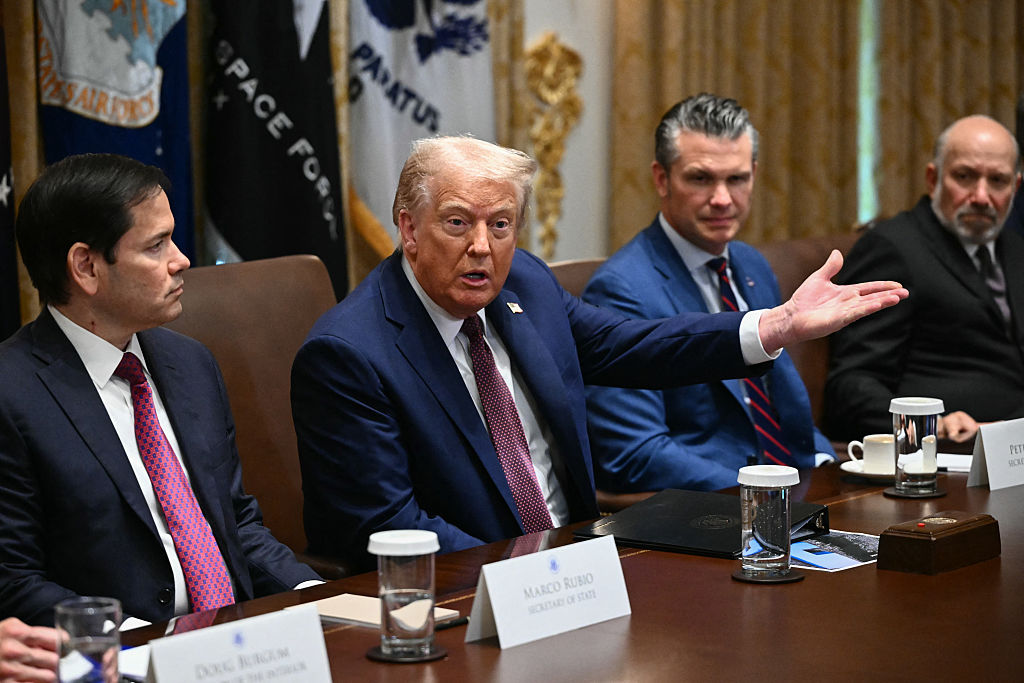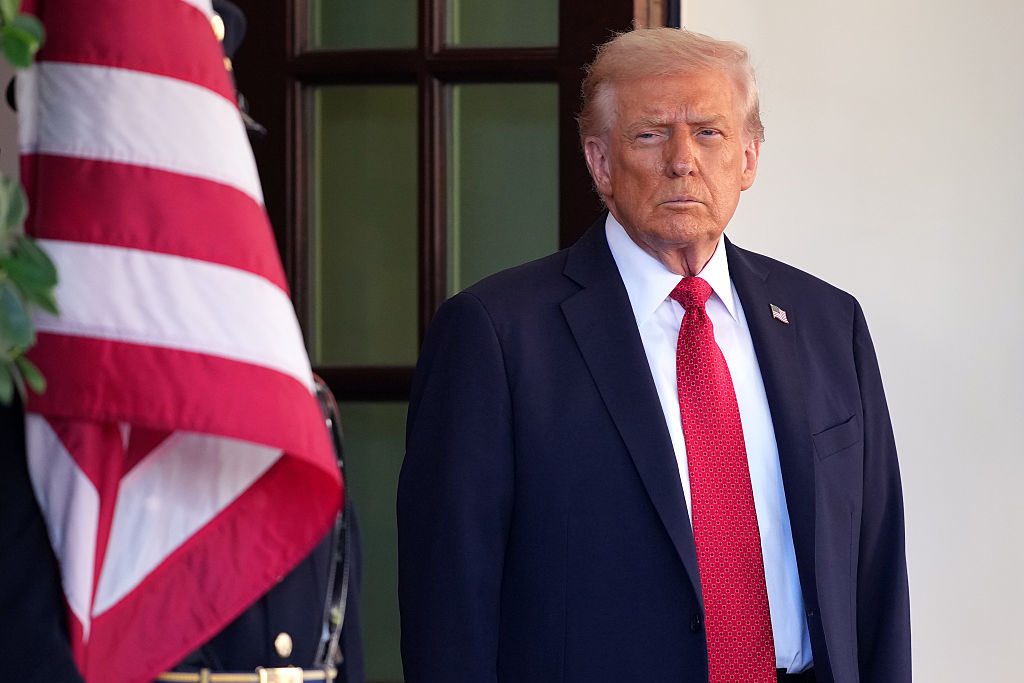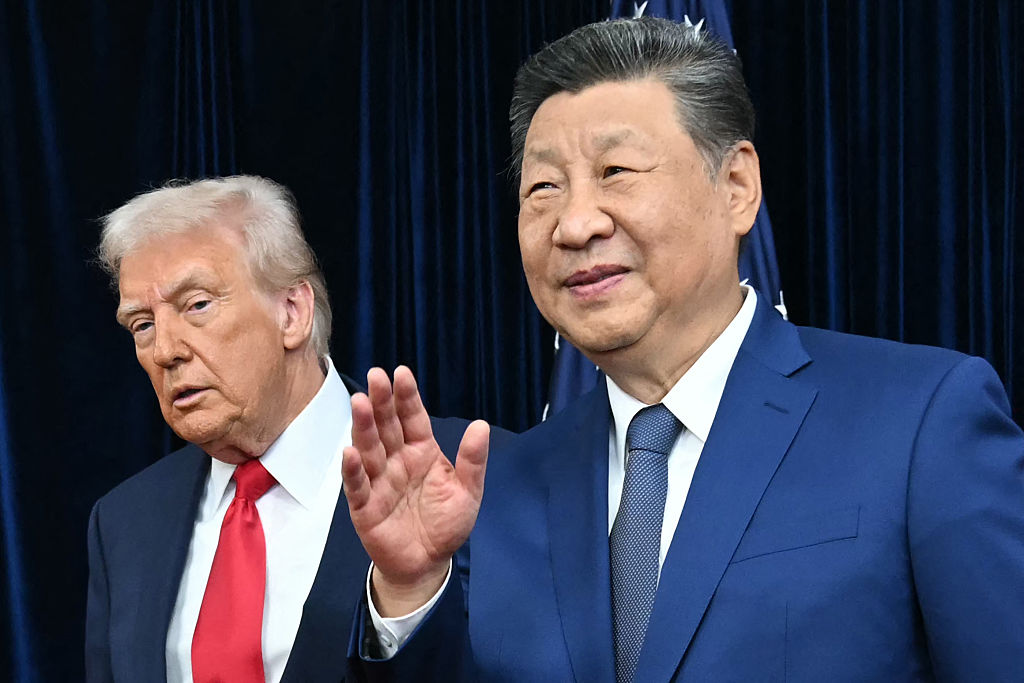“I have the right to do anything I want to do,” Donald Trump told reporters in the White House cabinet room last month. “I’m the President of the United States.”
Other branches of the federal government might disagree, but their representatives are strangely mute. “What Trump wants, Trump gets” is the motto that has defined the first eight months of the President’s second term. The overhaul of global trade? Sorted with an executive order and a pen. Poor job numbers? Fire the messenger, hire your own. Feeling the acute absence of a ballroom? Take “a little walk” on top of your White House, look out at your vast kingdom, and decide where the marble floor and golden beams will go.
But domination of the federal government is simply not enough. This President has now set his sights on America’s real power engine: the private sector. And he doesn’t just want business to bend to his will. He wants a stake.
This President has now set his sights on America’s real power engine: the private sector
His first dabblings in acquired ownership have been met with very little resistance. “Intel is excited to welcome the United States of America as a shareholder,” the company said in its buoyant press release, after agreeing to hand over 10 percent of the company to the government in exchange for $8.9 billion in grants. The California-based manufacturer has gratefully received its 30 pieces of silver to solve several problems: not just the company’s financial issues, but an increasingly damaged public image, driven by Trump’s repeated criticisms of its chief executive Lip-Bu Tan and his “highly conflicted” connections to Chinese companies.
This Judas-style betrayal of business norms has made investors nervous about what comes next, and not just for the chip manufacturing company. The watering down of shareholder rights to get this deal over the line is worrisome enough, but the quick and casual manner in which the US government took its stake in Intel is what’s really garnered attention. “That was easy,” jests one Wall Street long-timer. Now everyone wants to know: who’s next?
Howard Lutnick has some ideas. Speaking last month on CNBC, the Commerce Secretary argued that defense companies such as Lockheed Martin are an “arm of the US government” – and ideal candidates for the government’s new equity search. The idea is picking up some sympathetic support, not least because some of these companies are almost completely funded by the US government already.
As is so often the case with Trump and his policies, there is a good point to be teased out around the drama and upheaval of norms. While some cry “dictatorship,” Intel seems rather enthusiastic about this new joint venture with the Swamp. It is a rare moment of transparency, one that gives Americans a glimpse into just how entwined the state and big business are: the former frequently propping up the latter, protecting major corporations from facing the consequences of failure in a market economy.
Indeed, the links between government money and big American corporations are inextricable. What is often described as a free market or a distinct separation of the state from the private sector is, in reality, crony capitalism on blatant display: billions of dollars transfer every year from the taxpayer to the country’s biggest healthcare provider, UnitedHealthcare, to cover both Medicare and Medicaid. Exxon Mobil benefits from receiving billions of its own, in the form of federal subsidies and loans.
Yet the extreme makeover of the Republican party – especially on business policy – means that rather than taking on cronyism and putting an end to taxpayer funds picking winners and losers, the second Trump administration is far more interested in how it can skim off the success and the profits of America’s biggest players, in how it can make government look like a “winner.”
Dreams of seizing the means of production are usually confined to one end of the political spectrum – the same end that likes to slip in talk of “manifestos” and workers of the world uniting. Not even New York’s Zohran Mamdani – the loud and proud socialist who won the Democratic nomination in the city’s mayoral race this summer – has yet felt so emboldened as to call for these kinds of business interventions. He’ll find it much easier to do so if Trump leads the way. It’s an uncomfortable overlap that neither the President nor the soon-to-be Mayor want to admit, but their shared love for economic populism explains why both men were able to move the numbers in their favor across the five boroughs in their most recent respective elections.
But is America ready for some real nationalization? Markets are still jittery, as they navigate the strong dose of protectionism Trump administered when he announced a 10 percent universal tariff on goods coming into the US. While the federal government does have a record of acquiring businesses, the Intel deal looks a lot more like the arrangements made in far more interventionist and often stagnant economies. The exception might be China, where the Chinese Communist party has at least some stake in the majority of large companies in the country. Is this really the model Trump wants to emulate?
Regardless, his plans may have to wait, as some parts of the government are not ready to settle for Trump’s takeover of the public sector just yet. The legality of Trump’s tariffs is now likely to be determined by the Supreme Court, while Democrats gear up for another spending battle on Capitol Hill.
It seems Trump will have enough to keep him busy within government before he seriously considers expanding his reach into the private sector.
This article was originally published in The Spectator’s September 15, 2025 World edition.


























Leave a Reply